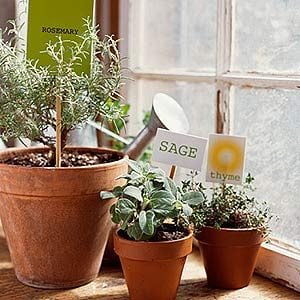
Get Ready and Set Before You Grow
Before you start planning an indoor kitchen garden, however, there are some factors to consider. Plants grow best when they are given the conditions they prefer, and the more types of vegetables and herbs you want to grow, the more you’ll need to make sure you have the growing conditions for success. Indoor vegetables won’t give you the yields you’d get if you were planting outdoors, but they’ll certainly help to satisfy that yen for something fresh-and they taste even better because you grew them yourself.
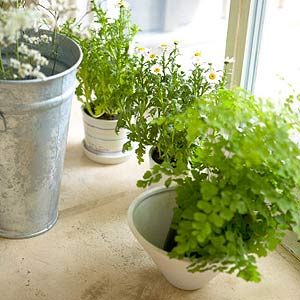
Let There Be Light
If you look at vegetable gardens outdoors, they’re usually planted where they’ll get a maximum amount of sunlight. Most vegetables and herbs require a minimum of six to eight hours of sunlight a day to help them grow and reach maturity, and you won’t get that from windowsills as a rule. You’ll need to use supplemental light fixtures with full spectrum fluorescent bulbs, especially if your windows are facing north or east.
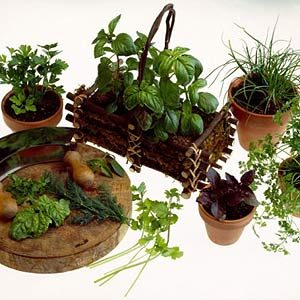
Create the Right Climate
Some crops such as leafy greens (lettuce, cabbage, chard and spinach) as well as radish and beets prefer cooler temperatures for growing, around 15 degrees Celsius. Heat-loving crops such as peppers, beans, tomatoes and cucumbers need daytime temperatures a bit above 20 degrees Celsius in order to grow and set fruit properly.
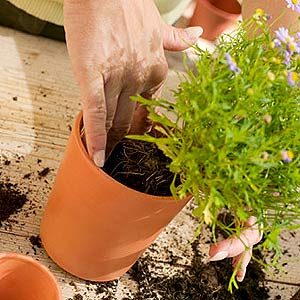
Soil Suggestions
Use a sterile potting mix for growing vegetables and other food crops indoors. Not only do you reduce the risk of soil-borne pathogens by using a prepared mix, your containers will be lighter in weight and easier to move around. A good growing mix for vegetables is even quantities of perlite, vermiculite, peat moss and sand. You can purchase premixes that include moisture-holding crystals and timed-release fertilizer, but these can get expensive especially if you plan a lot of plantings.
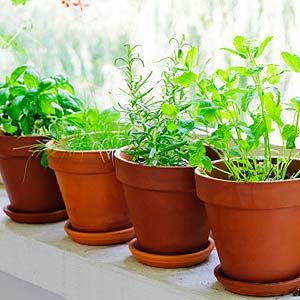
Choose The Right Containers
Almost anything can be used as a container for growing plants, providing it is clean, solidly constructed, and has drainage holes in the bottom. However, give some consideration to what you’re planting. A crop like salad greens or radish can be sown and grown in containers that are only a few inches deep, because you harvest the crop when it’s not very large. Crops such as tomatoes, beans, cucumbers and other climbing types of plants are going to grow larger, and require more of a root system to support them; carrots and beets also need more depth of soil to grow into, as their crops develop below the soil surface.
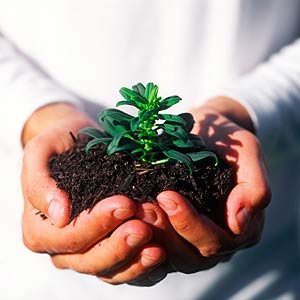
Feed Them Fertilizer
Growing plants need fertilizer, especially if in a soilless potting medium that contains no nutrients. Some gardeners use a water soluble fertilizer, either organic such as fish emulsion or seaweed fertilizer, or a chemically based product, once a week (or as per brand directions), while others use slow-release, palletized fertilizer mixed into the soil at the time of plantings. Whatever you use, don’t over-fertilize, which can cause salt buildup and burn delicate roots.
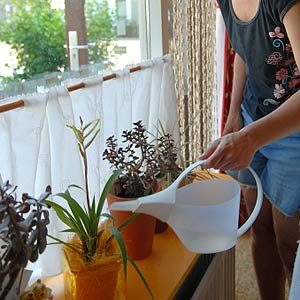
Watch the Water
Watering is crucial for indoor plantings, whether of herbs, vegetables or houseplants. Without natural watering from rainfall, and because they hold a finite amount of soil, containers dry out quickly, especially if the pots are small or when plants are growing vigourously. Try setting your containers in flats or trays lined with pea gravel or small stones: the trays will hold runoff from watering, and the gravel keeps the pots from standing in that runoff. Over-watering can be as detrimental as under-watering, so watch your plants carefully. Signs of over-watering can include mould on the soil surface, root rot, which will lead to stunted growth, leaf drop of both new and older leaves, and eventual death of the plant.
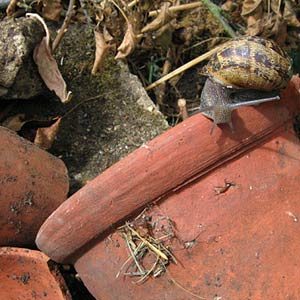
Critter Control
While indoor veggie gardening has its challenges, one advantage is that there are fewer pests to be concerned with, especially if you start with sterilized potting medium and containers. If you have houseplants already, you may have mealy bugs, spider mites, aphids or whitefly, but these can generally be controlled with organic insecticidal soap-follow directions as per use, and don’t overuse, or spray plants too close to harvesting time. If you do treat with even an organic solution, remember to wash your produce before eating it.